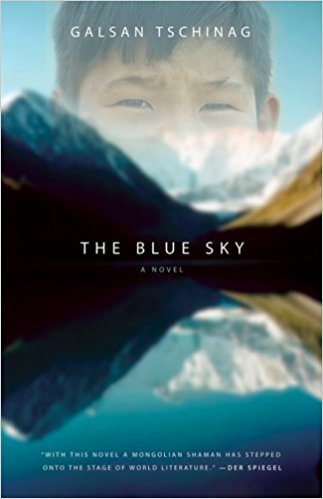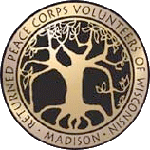Mongolia

Mongolia
It is said that art is a reflection of a culture, and this is certainly true in Mongolia. Mongolians take great pride in their history - a history of an empire that stretched across much of Eurasia. They love the horses that made their empire possible. This love of horses has deeply influenced their music, which is often played on the horse-head fiddle, whose rhythms bring to mind the cadence of a galloping horse. Here, preparations are being made for the Naadam festival, a renowned celebration of Mongolian national pride, famous for its spectacular displays of wrestling, horse racing, and archery. These smiling boys are clearly excited - they have been chosen to play their horse-head fiddles for the opening ceremonies.
– © John Schilling Ulan Bator, Mongolia
Mongol Uls
Northern Asia
Area 1,564,116 km2 (19th)
Arable 0.4%
Population 3,226,516 (2/km2)
Gov’t Parliamentary
Capital Ulaanbaatar (949K)
GCP/capita $5,500
Military 0.8% of GDP (145th of 195)
In poverty 30%
Life expectancy 69 yrs
HIV/AIDS <0.1% (>500 living)
Literacy 97%
Languages Khalkha Mongol, Turkic, Russian
Religions Buddhist Lamaist 50%, Shamanist and Christian 6%, Muslim 4%, none 40%
Agriculture wheat, barley, vegetables, forage crops, sheep, goats, cattle, camels, horses
Industry construction and materials, oil, food, beverages, animal products, cashmere and natural fiber manufacturing
PCVs 1991–present
Peace Ranking 64th
Adult Books

By Carl Robinson, 2010
Paperback: 536 pages
Publisher: Odyssey Books & Maps; First Edition edition (March 1, 2010)
Language: English
ISBN-13: 978-9622178083
Book Description
Explores Mongolia's history, culture and geography through insightful writing and beautiful imagery. This beautifully illustrated book provides a comprehensive and insightful guide to the diverse natural history and rich culture of 'The Land of the Eternal Blue Sky.'
Read more at books.google.com
Kids' Books

By Galsan Tschinag, translated Katharina Rout, 2006
Format: Paperback, 192 pp.
ISBN: 978-1571310552
Age Range: 12+ years
Publisher: Milkweed Editions; 1 edition, 2006
Films
Film: The Story of the Weeping Camel (Die Geschichte vom weinenden Kamel)
Director: Luigi Falorni, Byambasuren Davaa, 2003
Languages: Mongolian
90 minutes – Germany / Mongolia
A German docudrama about a family of nomadic shepherds in the Gobi Desert trying to save the life of a rare white bactrian camel (Camelus bactrianus) calf after it was rejected by its mother.
SYNOPSIS from IMBD: Springtime in the Gobi Desert, South Mongolia. A family of nomadic shepherds assists the births of their camel herd. One of the camels has an excruciatingly difficult delivery but, with help from the family, out comes a rare white colt. Despite the efforts of the shepherds, the mother rejects the newborn, refusing it her milk and her motherly love. When any hope for the little one seems to have vanished, the nomads send their two young boys on a journey through the desert, to a backwater town in search of a musician who is their only hope for saving the colt's life.
Awards: Directors Guild of America Award for Outstanding Directing – Documentaries
Film: The Cave of the Yellow Dog
Director: Byambasuren Davaa, 2005
Languages: Mongolian
93 minutes – Germany / Mongolia
A gentle fable about the limitations of life and acceptance. A girl learns the painful lesson of letting go of want when her father insists on leaving behind her newfound stray dog. However, the ending of the film offers hope—a lesson of life being full of changes—and how the consequences of change may bring unexpected rewards.
SYNOPSIS: The story opens with Nansal returning from boarding school to her family. The family of five lives in a yurt and lives off of their livestock. Nansal's father is worried about his family's survival because of the wolves that have been attacking their herd.
When Nansal stumbles across a cave in which she finds a black and white dog. She brings the dog home and names it "Zochor" (Spot). Her father is worried, knowing that wolves live in caves and may follow its scent and kill their livestock.
The father departs for town to sell the pelts of the sheep killed by wolves. He instructs his wife to get rid of the dog before he is home. Nansal is sent out to graze the herd, but she gets lost. The mother is distraught when the herd comes back without Nansal and goes looking for her.
Nansal finds refuge in the yurt of an elderly woman, where Nansal hears the story of the Cave of the Yellow Dog, in which a yellow dog is trapped in a cave with no exit by a man who seeks to cure his daughter's illness.
The mother finds Nansal. Zochor is still with the family when the father returns home. He tries to sell Zochor to some wolf hunters, but when Nansal tells them she found him in a cave, the deal falls through.
When family moves on, they pack their belongings onto carts. The three children are put onto the carts, with Nansal watching her younger brother. Zochor is tied to a stake so he cannot follow them. Nansal is distracted by Zochor and does not watch her brother, who escapes.
The family travels several miles until they realize that the boy is not with them. The father turns back immediately and finds his son rushing towards a flock of vultures. When the boy is right next to the flock, Zochor breaks free and scares them away, and the boy is rescued.
From then on, Zochor travels in the wagon with Nansal.
Awards: Mongolia's contender for the 2005 Academy Award for Best Foreign Language Film. It won the 2006 Deutscher Filmpreis Award for Best Children's Picture.
Film: A Pearl in the Forest
Director: Enkhtaivan Agvaantseren, 2008
Languages: Mongolian
90 minutes – Mongolia
This is one of the first films to openly talk about events of the 1930s and the impact of the rise of Soviet communism on Mongolia. It is also one of the first films intended to present the history of the Buryats, one of the ethnic groups present in Mongolia.
IMBD: Is all fair when love becomes war? "Promises are like pie crusts: Made to be broken." In the 1930s, Stalin put Lenin's words into action with his infamous "purges," bringing horrors to the people of Mongolia - a geographically unified nation that he broke up with the shattering fist of political force. In the midst of a Mongolian Buryat village, Sendem is a young woman who has the curse of great beauty. Markhaa is the former villager who now returns to his hometown as a government spy. Although Sendem is already engaged to another, Markhaa is determined to use the power of his government authority to crush a village in order to take by force what he cannot win by love: the heart of Sendem. A tender blossom snapped from a tree and crushed underfoot, Sendem focuses her hope on the symbol of a hand-carved necklace once given to her by her fiancé ... and in a treasure more precious than a shimmering pearl that she leaves behind in the shelter of a dark Mongolian forest. - Written by Lewis Kocher
Film: The Story of the Weeping Camel (Die Geschichte vom weinenden Kamel)
Director: Luigi Falorni, Byambasuren Davaa, 2003
Languages: Mongolian
90 minutes – Germany / Mongolia
A German docudrama about a family of nomadic shepherds in the Gobi Desert trying to save the life of a rare white bactrian camel (Camelus bactrianus) calf after it was rejected by its mother.
SYNOPSIS from IMBD: Springtime in the Gobi Desert, South Mongolia. A family of nomadic shepherds assists the births of their camel herd. One of the camels has an excruciatingly difficult delivery but, with help from the family, out comes a rare white colt. Despite the efforts of the shepherds, the mother rejects the newborn, refusing it her milk and her motherly love. When any hope for the little one seems to have vanished, the nomads send their two young boys on a journey through the desert, to a backwater town in search of a musician who is their only hope for saving the colt's life.
Awards: Directors Guild of America Award for Outstanding Directing – Documentaries
Documentary: Morin Khuur - The Soul Of The Mongolian Horseman
Director: Benoît Ségur for UNESCO's Living Cultures, 2013
Languages: English and Mongolian
The steppes of Mongolia, in the heart of Central Asia, sometimes echo with the haunting sound of music that reaches into the hearts of animals and men. Omba is one of the last teachers of the morin khuur, a unique traditional fiddle, developed from the bond between the horsemen people and their mounts. Four young students are among the few children lucky enough to receive Omba’s teaching. They spend several months with her, to learn about this magical instrument, which is said to have healing powers. But first, they must train hard and fill themselves with the sounds of nature. When they return to their city, they will perform a concert in the theater of the provincial capital, to help perpetuate this oral tradition.
Music
Recipes
Focus Word
Focus Word for 2015 - "Water"
Khalka Mongol: us (oos)
Horse motif from instruments
Copyright © Julie Olsen
Mongolia 2015
|
|
Returned Peace Corps Volunteers of Wisconsin-Madison is a public charity registered under section 501(c)(3) of the Internal Revenue Code of the United States. Its EIN is 39-1669348. It is also an affiliate group of the National Peace Corps Association (NPCA).
|
||







